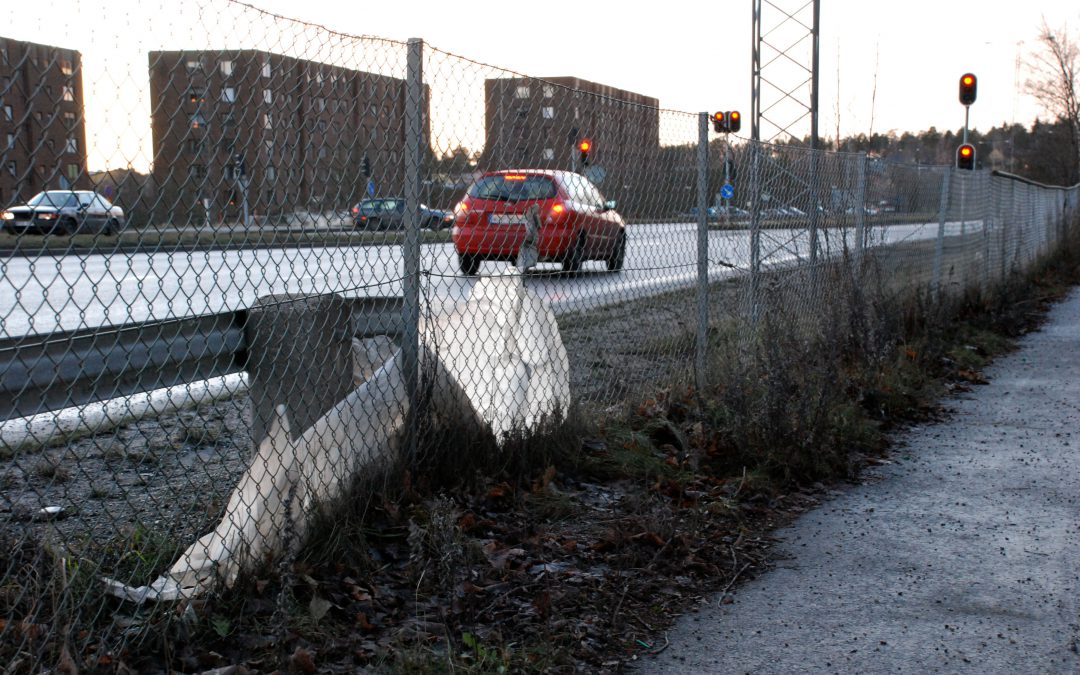How to survive the dark months in Sweden
To celebrate the change of clocks this weekend, please find this guide to help you through the tunnel, that will be the experience of your Swedish life up until mid-April next year.
Why? Like most people, I believe that it is not the cold that presents the greatest problem of winter, it is the darkness. Personally, I enter a somehow claustrophobic dizziness mid-October, that lasts until late February, followed by a re-lapse throughout March.
If this is your first winter in Sweden, you might not know what to expect. You might not know that the most difficult part is not the few hours of daylight themselves, but rather the fact the daylight itself does not live up to its name. With the sun lurking behind some trees just above the horizon, and behind a mile of clouds, anyway, dawn turns into dusk without even bothering pretending there is anything in between. It is self-explanatory that this can have disastrous effects on your well-being, mood and activity level. If you are a winter tunnel novice, you need to watch out for the traps of comfort and isolation. Surviving the Nordic winter is all about creating a sustainable routine where you make the effort of getting out, meeting people, get some exercise and catching some light.
First, sort out the necessary supplements
Vitamin D
Called D-vitamin in Swedish, for reference.
If you do not have the time or money for monthly trips to Thailand, or the stomach capacity for 35 kilograms of salmon per day, your solution comes in little jars purchased from your local pharmacy (most likely closed on Sundays).
Chocolate
Does help you through the gloom according to some experts. Others claim the opposite, pointing out the dangers with addictive substances.
At the end of the tunnel
Take a walk before sunset
That is, during your lunch break. It will make your afternoon so much easier. No excuses.
Light therapy
There are light cafés, that tend to shut down and re-appear every winter, so I cannot advise you on any permanent location. Personally, I think they are too expensive to make a sustainable solution. I use more affordable, and less conventional, solutions. On a bad day, I visit Ulriksdals trädgård or a similar enterprise. A garden centre, a green-house, full of retired enthusiasts, stressed parents, plants, a cat. There’s even a café. And it is bright, lit up like summer.
Praising shadows
Beyond light therapy and greenhouses, you need to think about lighting. The more is not always merrier when it comes to light in the dark. Instead, take a look at how the native Swedes excel at creating warmth through low, soft, strategically placed. Table lights, window lights, candles.
Get out of your den
Go against your intuition
You probably feel like hibernating. This is actually the core of the problem. Half-way through December, you are feeling the way you do, mostly not because of the weather, but because of your habits changing with bad weather. Spending five months on the sofa will do you no good, regardless of weather.
Exercise
Admittedly, I hate anything related to exercise, but the sedentary lifestyle caused by unwillingness to leave your house may actually have more disastrous effects than the darkness in itself. Compensate for the time you do not spend outside by doing something else. Dancing, swimming, sports.
Meeting people
Plan it. No one will have the energy to improvise. Also contrived solutions are solutions.
A Lutheran approach
Work first, couch later
Try to do things that require energy before sunset. Starting the day on the sofa means you will not get further. This is particularly relevant if you are a student or looking for a job.
Stick to a routine
Although having children means much less sleep, and a ongoing sleep deprivation beyond imagination, the winters have actually become much easier since my twins were born. Why? Because weekends are not spent as an everlasting sleep-in. I am down at the play park at 9 am, regardless of temperature and precipitation. This means two things: It does not mess with my body clock, and, I always make it outside before sunset. It is lonely though, please join me.
Investments to make
Clothes that will keep you warm and dry
Read more about how to dress for the Swedish winter, here. Fool-proof test to find out whether your clothes are appropriate or not: Spend 20 minutes waiting for a bus on a January night.
Something fun
Plan a few, regularly occurring, events that you can look forward to. Make the days and the weeks different from each other. It is not a coincidence that Swedes plan ahead so much, join associations and have weekly schedules also for their private lives.
Remember, it will pass
When the first reliable snow starts falling, it is relief. A relief, in the way that it paints the black ground, the ugly branches, traces of summer with a glistering light-reflecting surface, a Christmas gift to your eyes and brain. The soundscape changes. Distant sounds seem closer, closer sounds are softened. You wake up one morning, and although you cannot see any trace of the snow, you can hear it.
With February comes the end of the tunnel. The mornings are no longer black but midnight blie, and the concept of afternoon is returning to your mind. High pressures, bright blue skies, and blinding sunshine brings a new sharpness to the real world. Dust is visible again, and you will take your tired coat to the dry cleaner, tidy up at home, one day realising you are suddenly not forcing yourself to do things things. There will be white spring evenings, summer nights. Dusk will be dawn, and dawn dusk.


Great article Sofi! Thank you for these doable suggestions. I’m also thinking of buying one of those light lamps that imitate the sun.
Very nice piece – good sense of humor – and spot on. I am a Dane who has lived abroad most of my life and have now returned to Denmark (hopefully not to remain forever) and while we are further south and have a slight bit more light in winter – we recognize all the signs and the mood which is captured so well in this write-up. Now I feel downright normal – not just depressed or gloomy 🙂 Thanks 🙂